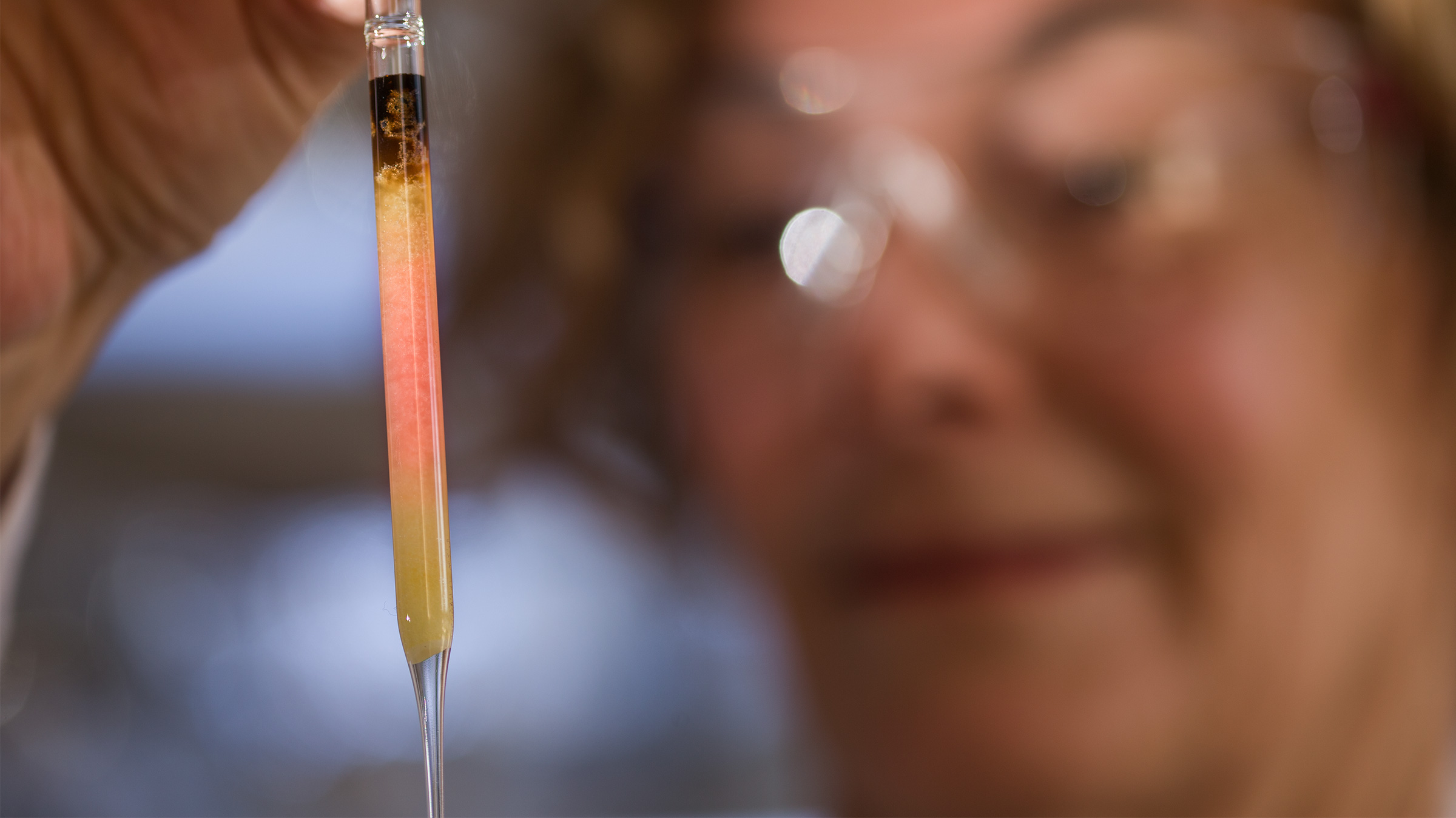Before Tumblr, Instagram, and mankind, itself—there was pink, floating in Earth's primordial ooze.
Yesterday, scientists from the Australian National University announced they had discovered the oldest color in the geological record. Fittingly, it’s a color that has captivated, mesmerized, and confounded the generations. It’s pink.
Researchers extracted the pigment from rocks deep beneath Africa’s Sahara Desert. “The bright pink pigments are the molecular fossils of chlorophyll that were produced by ancient photosynthetic organisms inhabiting an ancient ocean that has long since vanished,” they wrote. The rose-y concentrate comes when the pigments are diluted, but when they’re freshly grounded the fossils can range from a blood red to a deep purple.
According to the paper announcing the discovery, pink predated humans by at least 1 billion years, floating in a lifeless ocean during earth’s Middle Age. Scientists think the color was caused by algae, much like the plankton flamingoes feed off, slowly formed the characteristic color 1.8 billion years ago. “The nitrogen isotopic values of the fossil pigments showed that the oceans were dominated by cyanobacteria, while larger planktonic algae were scarce.” Despite being over 3.5 billion years old, cyanobacteria, or blue-green algae, are still some of the largest and most important groups of bacteria on earth.
It only took 1 billion years for millennial pink to be named the color of the year.







